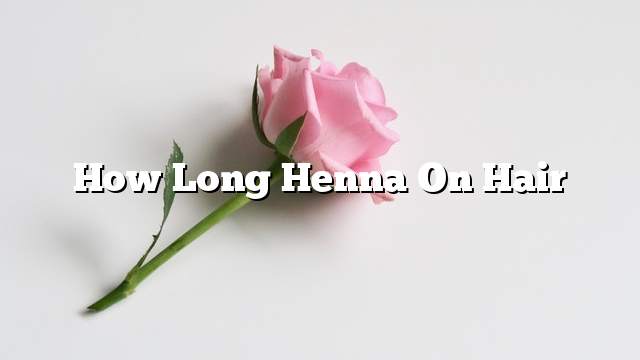Henna plant
It is an evergreen shrub, with a large branching trunk that is green and turns brown when mature. Its small white flowers have a strong and distinct aromatic aroma and its fruit as a small box contains pyramid-shaped seeds and has known henna since ancient times. The pharaohs used them in many ways, They have made from the powder of their leaves a mixture to decorate the hands and dye hair as well as to treat wounds and stop blood bleeding and help coagulation, it has a similar effect to vitamin, and recent studies have shown the containment of papers on the resistance of bacteria and fungi, which earns the effectiveness in the treatment of many diseases related to this probe has become.
Benefits of henna for hair
- Henna reduces the heat of the head and helps to eliminate the crust of hair, and inflammation of the scalp that may be caused by bacteria or fungi, as used in the fight and purify the scalp of parasites that invade the hair as lice.
- The scalp removes excess fat and reduces sweat secretion.
- Henna is a natural material that nourishes the hair and works to strengthen it and reduce its bombardment and fall, as well as it increases its density.
- It is the best natural way to dye hair without any harm, because it contains natural colored materials.
- Equivalent pH of the scalp and prevent the appearance of white hair (gray).
How to dye hair with henna
Mix about 100 grams of henna powder with a quantity of warm water, then knead well until it becomes as strong as the paste, then leave the mixture for at least 6-8 hours before putting it on the hair, then put the mixture on hair evenly to ensure that all parts We divide the hair into multiple parts and use a special brush to paint each part individually, cover the hair with a shower cover or a plastic bag, and advise to leave it on the hair for 3-4 hours and then wash thoroughly with water and shampoo.
Tips when using henna to dye hair
- Use glass or wood tools to prepare the henna mixture and avoid the use of metal tools. Its constituent minerals may interact with henna, affecting the desired results.
- Take care to remove henna from your hands or clothing immediately, it is a natural dye that may be difficult to remove later.
- It is recommended to apply forehead cream and an area around the ears with olive oil before using henna; to avoid dyeing the skin in these areas, it may be difficult to remove their effects.
- An allergy test is recommended before henna is used, and it should be tested on a small place of the body behind the ear or the soles of the forearm.
- Avoid using henna on chemically dyed hair.
- It is recommended to avoid using henna to dye hair dyed with chemical dyes.
Notes:
- Water can be dispensed with in henna kneading and using some herbs that nourish the hair, such as using walnut leaf tea to get brown hair, and a little lemon juice can be added to get a light color.
- Clove powder and coffee help to darken the color resulting from the dye.
- When mixing the dough, do not use metal tools.
